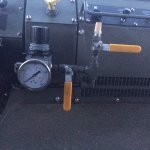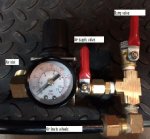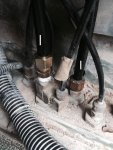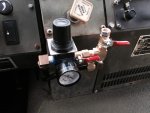- 6,837
- 649
- 113
- Location
- Stratford/Connecticut
The ctis air lines maybe. But the lines shouldn't take in any water they should be well sealed to begin with. The older trucks water makes its way into lots of places. The lmtv appears to be better sealed. I would raise the exhaust up a bit if you are planning to go in deep water. Although the truck does appear to run with no problem when the exhaust is submerged. If the engine were to stop with the exhaust submerged you may have a problem. Water levels above the dash will cause electrical problems down the line.







